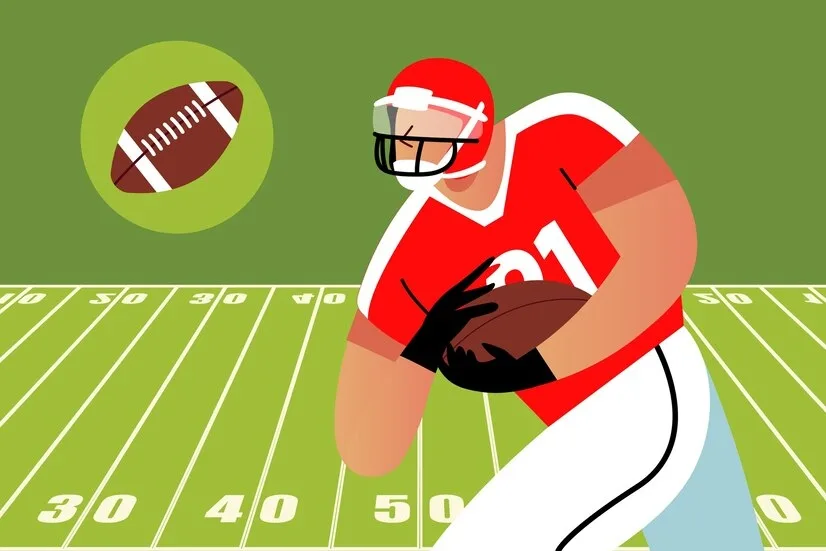BLOG
To sack as a quarterback nyt

The drama of a quarterback sack is a pivotal moment in any football game, and it’s no wonder that it’s a topic that captivates audiences and analysts alike. For those who follow the New York Times’ coverage of football, the intricacies of sacking a quarterback are both a topic of strategy and spectacle. This blog post dives into the multifaceted world of quarterback sacks, offering insights into their significance, execution, and influence on the game.
The Evolution of the Quarterback Sack
Understanding the sack starts with its history. Originally, football was a straightforward game, with primary focus on the ball carrier. The role of the defensive player evolved over time, becoming more strategic and crucial, as the forward pass became a dominant offensive tool. The sack emerged as a critical defensive tactic, effectively disrupting the quarterback’s rhythm and altering the course of the game.
In the early days of football, defenses were less concerned with pressuring the quarterback, focusing instead on stopping the run. However, as passing games became more prevalent, teams started to realize the significance of pressuring the quarterback. This evolution was marked by strategic developments, the advent of specialized defensive roles, and the emphasis on speed and agility over sheer strength. The sack became more than just a tackle behind the line of scrimmage; it turned into a game-changing play that could shift momentum and galvanize a team.
The Anatomy of a Sack
A sack is more than just tackling the quarterback; it’s a culmination of teamwork, timing, and technique. At its core, a successful sack requires a well-coordinated effort from the entire defensive unit. Linebackers, defensive ends, and tackles must work in unison, employing various schemes to penetrate the offensive line and reach the quarterback.
Timing is crucial for executing a sack. Defensive players must anticipate the snap and explode off the line with ferocity. Their objective is to close the gap between them and the quarterback as quickly as possible, leaving no time for the quarterback to react or escape. The defensive line must read the offensive line’s movements while maintaining discipline to avoid offside penalties.
Technique is another critical component. Tackling a quarterback who is often elusive and agile requires precision. Defensive players must maintain balance and leverage, using their hands and feet effectively to disengage from blockers and wrap up the quarterback. The art of sacking also involves the element of surprise, with defenders using feints and misdirection to confuse offensive linemen and create openings.
Impact on the Game
Sacking a quarterback can have profound effects on a game. Not only does it result in a loss of yards for the offense, but it also disrupts the quarterback’s rhythm and confidence. A well-timed sack can demoralize an opposing team, shifting momentum in favor of the defense.
From a strategic standpoint, consistent pressure on the quarterback forces offenses to adapt. This pressure can lead to hurried throws, resulting in incomplete passes or interceptions. Teams that excel in sacking the quarterback often force quick decisions from the quarterback, limiting the effectiveness of the passing game.
Beyond the immediate impact, the psychological effect of a sack is significant. Quarterbacks under constant threat of being sacked may alter their playing style, opting for shorter, safer passes to avoid contact. This shift can lead to conservative play-calling and restrict the offense’s ability to execute long, explosive plays.
The Role of the Defensive End
Among the key players involved in sacking a quarterback, the defensive end plays a crucial role. These athletes are often the fastest and most agile members of the defensive line, tasked with rushing the passer from the edge. Their speed, combined with their strength, makes them formidable opponents for any offensive tackle.
Defensive ends employ various techniques to reach the quarterback. The speed rush is a common tactic, where the end relies on their explosiveness to beat the offensive tackle around the outside. The bull rush, on the other hand, involves using brute strength to overpower the blocker and push them back into the quarterback’s space.
The versatility of the defensive end is vital for a successful sack. Many ends possess the ability to drop into coverage or defend against the run, making them unpredictable threats. Their presence on the field demands attention from offensive coordinators, who must devise strategies to neutralize their impact.
Linebackers and Blitz Packages
Linebackers are another critical component in the pursuit of the quarterback. While defensive ends apply pressure from the outside, linebackers often blitz through the interior gaps of the offensive line. Blitz packages, which involve sending additional defenders to rush the quarterback, are designed to overwhelm the offensive line and create chaos in the backfield.
Blitzing linebackers must possess a keen sense of timing and awareness. They need to identify weaknesses in the offensive line and exploit them with speed and precision. The element of surprise is essential, as offenses may not expect additional pass rushers beyond the defensive line.
Coordinating blitzes requires careful planning and execution. Defensive coordinators carefully study offensive tendencies to determine the optimal times to send extra pressure. When executed successfully, a well-timed blitz can lead to a game-changing sack or force the quarterback into making a rushed decision.
The Quarterback’s Perspective
While the focus is often on the defensive side of the sack, understanding the quarterback’s perspective is equally important. Quarterbacks face immense pressure to read defenses, make quick decisions, and deliver accurate passes. The threat of being sacked adds another layer of complexity to their role.
Quarterbacks must be aware of their surroundings at all times, sensing pressure and knowing when to evade or throw the ball away. Pocket presence is a critical skill, allowing quarterbacks to maneuver within the pocket and avoid oncoming defenders. Those who excel in this area often possess a sixth sense, anticipating pressure and reacting accordingly.
In addition to physical skills, mental toughness is essential for quarterbacks facing relentless pass rushes. The ability to remain calm and composed under pressure separates elite quarterbacks from the rest. They must trust their offensive line, maintain focus, and execute the game plan despite the constant threat of being sacked.
Strategies to Counter the Sack
Offensive coaches and coordinators constantly seek ways to counteract the defensive threat of the sack. One common strategy is to employ quick passes and screen plays that minimize the time the quarterback holds the ball. These plays are designed to exploit aggressive pass rushes by getting the ball into the hands of playmakers quickly.
Another approach is to use maximum protection schemes, where additional blockers are kept in to provide extra support for the quarterback. Tight ends and running backs may be tasked with chipping or blocking defensive players, reducing the likelihood of a sack.
Play-action passes can also be effective in neutralizing the pass rush. By faking a run play, the offense can slow down the defensive line’s initial burst, buying the quarterback more time to find an open receiver downfield. This strategy relies on the threat of a strong running game to keep defenders honest.
Sacks and Game-Changing Moments
Throughout football history, there have been numerous game-changing moments where a sack played a decisive role. These moments are etched in the memories of fans and players alike, serving as reminders of the impact a single play can have on the outcome of a game.
Legendary pass rushers like Lawrence Taylor, Reggie White, and Deacon Jones left an indelible mark on the game with their ability to consistently sack quarterbacks. Their performances inspired a generation of defensive players and elevated the sack to an art form.
In recent years, quarterbacks like Tom Brady, Aaron Rodgers, and Patrick Mahomes have faced intense pressure from opposing defenses. Their ability to navigate the pocket and deliver accurate throws under duress showcases the evolution of the position and the ongoing battle between offense and defense.
The Future of the Sack
As football continues to evolve, so too will the strategies and techniques associated with sacking the quarterback. Advancements in technology, analytics, and training methods will shape the future of the sport, influencing how defenses approach the sack.
One potential area of development is the use of data-driven insights to inform defensive strategies. Teams may leverage advanced analytics to identify patterns and tendencies in offensive play-calling, allowing them to anticipate passing situations and deploy effective pass rush schemes.
Additionally, the continued emphasis on player safety will influence how sacks are executed and officiated. Rule changes aimed at protecting quarterbacks may alter the dynamics of the pass rush, requiring defenders to adapt their techniques while maintaining an aggressive approach.
Sack Artists and Defensive Legends
Throughout football history, certain players have earned the title of “sack artists” for their remarkable ability to bring down quarterbacks. These defensive legends have left an indelible mark on the game, inspiring future generations of players to follow in their footsteps.
One of the most iconic names in sack history is Lawrence Taylor. Known for his relentless pursuit and explosive speed, Taylor revolutionized the linebacker position and became a nightmare for opposing quarterbacks. His impact on the game extended beyond the stats, as he changed the way teams approached pass protection.
Reggie White, known as the “Minister of Defense,” was another legendary sack artist. His combination of strength, agility, and technique made him a dominant force on the field. White’s ability to consistently pressure quarterbacks earned him a place among the all-time greats and solidified his legacy as one of the most feared pass rushers in NFL history.
The Art of Sack Celebration
In the high-stakes world of football, emotions run high, and players often express their success through elaborate celebrations. The sack celebration has become an art form in its own right, with players devising creative ways to showcase their prowess after bringing down the quarterback.
Sack celebrations can range from choreographed dances to signature poses, each reflecting the player’s unique personality and style. Linebackers may mimic a predator stalking its prey, while defensive linemen might strike a powerful pose, flexing their muscles to the delight of fans.
These celebrations serve as a testament to the hard work and dedication required to achieve a sack. They also add an element of entertainment to the game, captivating audiences and becoming viral moments shared across social media platforms.
Sacks and Game-Changing Moments
Throughout football history, there have been numerous game-changing moments where a sack played a decisive role. These moments are etched in the memories of fans and players alike, serving as reminders of the impact a single play can have on the outcome of a game.
Legendary pass rushers like Lawrence Taylor, Reggie White, and Deacon Jones left an indelible mark on the game with their ability to consistently sack quarterbacks. Their performances inspired a generation of defensive players and elevated the sack to an art form.
In recent years, quarterbacks like Tom Brady, Aaron Rodgers, and Patrick Mahomes have faced intense pressure from opposing defenses. Their ability to navigate the pocket and deliver accurate throws under duress showcases the evolution of the position and the ongoing battle between offense and defense.
The Future of the Sack
The future of the NFL and the sack as a defensive tactic looks promising, fueled by technological advancements and strategic innovations. Emerging technologies, such as wearable devices and data analytics, are revolutionizing the sport, providing teams with valuable insights into player performance and tendencies. These tools enable defenses to optimize their pass-rushing strategies, exploiting weaknesses in offensive lines with surgical precision.
Furthermore, as player safety continues to be a top priority, rule adjustments may shape how sacks are executed and officiated. Defensive players will need to adapt to evolving regulations while maintaining their aggressive and relentless pursuit of the quarterback. The integration of AI and machine learning in training and game preparation will enhance defensive coordination and situational awareness, empowering sack masters to achieve new levels of excellence.
Conclusion
To sack as a quarterback nyt is an intricate blend of history, strategy, and skill. From its humble origins to its present-day significance, the sack has evolved into a game-altering play that demands precision and teamwork. Whether admired for its impact on game dynamics or feared for its ability to disrupt offensive schemes, the sack remains a defining moment in football. Aspiring players and fans alike can look forward to a future where innovative tactics and legendary performances continue to shape the game’s narrative.
BLOG
Kamiyab: A Symbol of Success, Ambition, and Cultural Pride

The word Kamiyab carries a profound meaning that transcends language and culture. Originating from Persian and Urdu, “Kamiyab” translates to “successful” or “victorious.” It is a term that embodies achievement, ambition, and the pursuit of excellence. In recent years, it has also become a popular name, brand, and cultural symbol, representing the aspirations and triumphs of individuals and communities. This article explores the significance of Kamiyab, its cultural and linguistic roots, and its impact as a symbol of success and pride.
The Meaning and Origins of Kamiyab
The word “Kamiyab” is derived from the Persian language, where “Kam” means “work” or “effort,” and “Yab” means “to find” or “to achieve.” Together, it signifies the attainment of success through hard work and determination. The term is widely used in Persian, Urdu, and other languages influenced by Persian culture, such as Hindi and Punjabi.
In addition to its linguistic roots, it holds cultural significance in regions where Persian and Urdu are spoken. It is often used to celebrate achievements, whether personal, professional, or communal. The term is also associated with positive attributes such as resilience, ambition, and perseverance, making it a powerful symbol of success.
Kamiyab as a Name and Brand
In recent years, Kamiyab has gained popularity as a name for individuals, businesses, and brands. Its positive connotations and universal appeal make it an attractive choice for those looking to convey a sense of achievement and ambition. Here are some ways in which it is used:
- Personal Names:
Kamiyab is a popular given name for boys in Persian and Urdu-speaking communities. Parents often choose this name to express their hopes and aspirations for their child’s future success and happiness. - Business Names:
Many businesses and organizations have adopted Kamiyab as part of their name to reflect their commitment to excellence and success. From restaurants and retail stores to consulting firms and educational institutions, the name Kamiyab conveys a sense of professionalism and ambition. - Cultural and Artistic Projects:
It is also used as a title or theme for cultural and artistic projects, such as films, books, and music albums. These works often explore themes of success, resilience, and the pursuit of dreams, resonating with audiences on a deep emotional level.
The Cultural Significance of Kamiyab
Kamiyab’s cultural significance extends beyond its linguistic meaning. It represents a shared value system that emphasizes hard work, determination, and the celebration of achievements. Here are some ways in which it holds cultural importance:
- A Symbol of Aspiration:
It embodies the aspirations of individuals and communities striving for success. It serves as a reminder that with effort and perseverance, one can overcome challenges and achieve their goals. - A Source of Pride:
For many, it is a source of pride and identity. It reflects the values and traditions of Persian and Urdu-speaking cultures, fostering a sense of belonging and cultural heritage. - A Motivational Tool:
The concept of it is often used as a motivational tool in education, sports, and personal development. It encourages individuals to set goals, work hard, and celebrate their achievements, no matter how big or small. - A Unifying Force:
It transcends linguistic and cultural boundaries, serving as a unifying force for diverse communities. It is a term that resonates with people from different backgrounds, promoting a shared understanding of success and ambition.
The Impact of Kamiyab
The impact of Kamiyab can be seen in various aspects of life, from personal development to cultural expression. Here are some ways in which Kamiyab influences individuals and communities:
- Empowering Individuals:
Kamiyab empowers individuals to pursue their dreams and overcome obstacles. It serves as a reminder that success is achievable through hard work, determination, and resilience. - Inspiring Creativity:
The concept of Kamiyab inspires creativity and innovation. Artists, writers, and musicians often draw on the themes of success and ambition to create works that resonate with audiences and reflect their own journeys. - Fostering Community Spirit:
Kamiyab fosters a sense of community spirit by encouraging people to celebrate each other’s achievements. It promotes a culture of support, collaboration, and mutual respect. - Promoting Cultural Exchange:
As a term with deep cultural roots, Kamiyab promotes cultural exchange and understanding. It introduces people to the values and traditions of Persian and Urdu-speaking cultures, fostering appreciation and respect for diversity.
Kamiyab in Popular Culture
Kamiyab has made its way into popular culture, appearing in films, music, literature, and social media. Here are some examples of how Kamiyab is represented in popular culture:
- Films and Television:
Kamiyab is often used as a title or theme in films and television shows that explore themes of success, ambition, and resilience. These stories resonate with audiences and inspire them to pursue their own dreams. - Music:
Many musicians and singers have incorporated Kamiyab into their lyrics and song titles. The term is used to convey messages of hope, determination, and triumph, making it a popular choice for motivational and inspirational songs. - Literature:
Authors and poets often use Kamiyab as a central theme in their works. It serves as a symbol of personal growth, achievement, and the pursuit of excellence, resonating with readers on a deep emotional level. - Social Media:
Kamiyab has become a popular hashtag and keyword on social media platforms. People use it to share their achievements, celebrate milestones, and inspire others to pursue their goals.
Lessons from the Concept of Kamiyab
The concept of Kamiyab offers valuable lessons for individuals and communities. Here are some key takeaways:
- The Importance of Hard Work:
Kamiyab reminds us that success is achieved through hard work and determination. It encourages us to set goals, stay focused, and persevere in the face of challenges. - The Power of Resilience:
The journey to success is often marked by obstacles and setbacks. It teaches us the importance of resilience and the ability to bounce back from adversity. - Celebrating Achievements:
Kamiyab encourages us to celebrate our achievements, no matter how big or small. It reminds us to take pride in our accomplishments and to recognize the efforts of others. - Fostering a Positive Mindset:
The concept of Kamiyab promotes a positive mindset and a belief in one’s ability to succeed. It inspires us to approach life with optimism, ambition, and a sense of purpose.
Conclusion: The Enduring Legacy of Kamiyab
In conclusion, Kamiyab is more than just a word—it is a symbol of success, ambition, and cultural pride. Its linguistic roots, cultural significance, and universal appeal make it a powerful concept that resonates with individuals and communities around the world. Whether as a name, a brand, or a cultural symbol, it embodies the values of hard work, determination, and the celebration of achievements.
As we navigate the challenges and opportunities of life, the concept of it serves as a reminder of the importance of resilience, ambition, and a positive mindset. It encourages us to pursue our dreams, celebrate our successes, and support others in their journeys. So, the next time you hear the word Kamiyab, take a moment to reflect on its meaning and the lessons it holds—you might just find the inspiration to achieve your own success.
BLOG
Darryl Baum: A Complex Figure in the World of Crime and Controversy

The name Darryl Baum is one that evokes a mix of curiosity, intrigue, and controversy. Known primarily for his involvement in criminal activities and his alleged connections to high-profile figures, Baum’s life and legacy are shrouded in mystery and speculation. While his story is often overshadowed by his criminal associations, it offers a fascinating glimpse into the complexities of urban crime, loyalty, and the consequences of a life lived on the edge. This article delves into the life, actions, and impact of Darryl Baum, exploring the man behind the headlines and the lessons his story holds.
Who Was Darryl Baum?
Darryl Baum was a New York City-based figure who gained notoriety for his involvement in criminal activities during the late 1990s and early 2000s. While much of his life remains undocumented, Baum is often remembered for his alleged ties to rapper 50 Cent (Curtis Jackson) and his role in a high-profile shooting incident that targeted the rapper in 2000. Baum’s life was cut short in 2000 when he was shot and killed, but his story continues to spark discussions about crime, loyalty, and the consequences of living a dangerous lifestyle.
The Life and Actions of Darryl Baum
Darryl Baum’s life was marked by his involvement in the criminal underworld, particularly in New York City. Here are some key aspects of his life and actions:
- Criminal Activities:
Baum was reportedly involved in various criminal activities, including drug trafficking and violence. His reputation as a dangerous figure in the streets of New York City earned him both fear and respect among those who knew him. - Alleged Connection to 50 Cent:
Baum’s name became widely known due to his alleged connection to rapper 50 Cent. In 2000, Baum was accused of being involved in a shooting that targeted 50 Cent, leaving the rapper with multiple gunshot wounds. The incident was a turning point in both men’s lives and has since become a significant part of hip-hop history. - Death and Legacy:
Darryl Baum’s life came to a violent end in 2000 when he was shot and killed. His death, like his life, remains shrouded in mystery, with various theories and rumors surrounding the circumstances. Despite his criminal past, Baum’s story has been immortalized in hip-hop culture and continues to be referenced in music and media.
The Significance of Darryl Baum
Darryl Baum’s significance lies in his representation of the darker side of urban life and the consequences of a life steeped in crime. Here are some reasons why his story is noteworthy:
- A Cautionary Tale:
Baum’s life serves as a cautionary tale about the dangers of criminal activity and the potential consequences of living on the wrong side of the law. His story highlights the risks and realities of a life marked by violence and crime. - Connection to Hip-Hop Culture:
Baum’s alleged connection to 50 Cent and the 2000 shooting incident have cemented his place in hip-hop history. The incident is often cited as a pivotal moment in 50 Cent’s career and has been referenced in his music and interviews. - Symbol of Urban Crime:
Baum’s life and actions are emblematic of the challenges and complexities of urban crime. His story sheds light on the social and economic factors that contribute to criminal behavior and the impact it has on individuals and communities. - Mystery and Speculation:
The mystery surrounding Baum’s life and death has fueled speculation and discussion. His story continues to intrigue those interested in true crime, hip-hop history, and the intersection of music and street life.
The Impact of Darryl Baum
Darryl Baum’s impact extends beyond his criminal activities and alleged connections. His story has influenced discussions about crime, loyalty, and the consequences of a dangerous lifestyle. Here are some ways in which his legacy continues to resonate:
- Influence on Hip-Hop Narratives:
Baum’s alleged involvement in the 2000 shooting of 50 Cent has become a part of hip-hop lore. The incident has been referenced in songs, interviews, and documentaries, contributing to the narrative of resilience and survival in the face of adversity. - Discussions About Crime and Consequences:
Baum’s life and death have sparked conversations about the root causes of crime and the impact it has on individuals and communities. His story serves as a reminder of the importance of addressing social and economic inequalities to prevent cycles of violence. - Exploration of Loyalty and Betrayal:
The circumstances surrounding Baum’s alleged involvement in the shooting of 50 Cent raise questions about loyalty and betrayal. His story highlights the complexities of relationships in the criminal underworld and the potential consequences of misplaced trust. - Cultural References:
Baum’s name continues to be referenced in popular culture, particularly in hip-hop music and media. His story has become a symbol of the dangers and realities of street life, influencing artists and audiences alike.
Lessons from Darryl Baum’s Story
The life and legacy of Darryl Baum offer valuable lessons for individuals and society as a whole. Here are some key takeaways:
- The Consequences of Crime:
Baum’s story underscores the potential consequences of a life steeped in crime. It serves as a reminder of the risks and realities of criminal activity and the impact it can have on individuals and their communities. - The Importance of Addressing Root Causes:
Baum’s life highlights the importance of addressing the social and economic factors that contribute to crime. By tackling issues such as poverty, lack of education, and limited opportunities, society can work towards preventing cycles of violence. - The Power of Resilience:
The 2000 shooting incident involving Baum and 50 Cent is a testament to the power of resilience. Despite facing significant challenges, 50 Cent was able to overcome adversity and build a successful career, serving as an inspiration to others. - The Complexity of Human Relationships:
Baum’s story sheds light on the complexities of human relationships, particularly in the context of loyalty and betrayal. It serves as a reminder of the importance of trust and the potential consequences of misplaced allegiances.
Conclusion: The Enduring Legacy of Darryl Baum
In conclusion, Darryl Baum’s life and legacy are a complex tapestry of crime, controversy, and cultural significance. While his story is often overshadowed by his criminal associations, it offers valuable insights into the realities of urban crime, the consequences of a dangerous lifestyle, and the power of resilience. Baum’s alleged connection to 50 Cent and the 2000 shooting incident have cemented his place in hip-hop history, ensuring that his story continues to be discussed and analyzed.
As we reflect on the life of Darryl Baum, we are reminded of the importance of addressing the root causes of crime, the power of resilience in the face of adversity, and the complexities of human relationships. His story serves as a cautionary tale and a source of inspiration, encouraging us to strive for a better future while learning from the past. So, the next time you hear the name Darryl Baum, take a moment to consider the lessons his story holds—you might just find a deeper understanding of the world we live in.
BLOG
02045996870 : Unraveling the Mystery Behind the Number

In an increasingly connected world, phone numbers have become more than just a means of communication—they are often gateways to stories, businesses, and even mysteries. One such number that has piqued curiosity is 02045996870. At first glance, it appears to be a standard phone number, but a closer look reveals layers of intrigue and potential significance. This article delves into the possible meanings, origins, and implications of 02045996870, exploring why it has captured the attention of so many.
What is 02045996870?
The number 02045996870 is a UK-based landline number, as indicated by the “020” area code, which covers London. The remaining digits, “45996870,” are unique to the specific line. While it may seem like an ordinary phone number, its appearance in various contexts has led to speculation about its purpose and significance.
Possible Interpretations of 02045996870
The number 02045996870 could represent several things, depending on the context in which it is used. Here are some possible interpretations:
- Business Contact Number:
One of the most straightforward explanations is that 02045996870 is a contact number for a business based in London. Many companies use landline numbers for customer service, sales inquiries, or general communication. The number could belong to a local business, a service provider, or even a startup. - Customer Support Line:
Another possibility is that 02045996870 is a customer support or helpline number. Businesses often dedicate specific numbers for customer service to ensure that inquiries are handled efficiently. This number could be associated with a well-known company or a niche service provider. - Scam or Spam Call:
Unfortunately, phone numbers are sometimes used for fraudulent activities. Scammers and spammers often use legitimate-looking numbers to deceive people into answering calls. If 02045996870 has been reported as a source of unsolicited calls, it could be linked to a scam operation. - Personal Number:
It’s also possible that 02045996870 is a personal landline number belonging to an individual or household. In this case, the number’s significance would depend on the person or family associated with it. - Marketing or Survey Calls:
Some organizations use phone numbers to conduct surveys, market research, or promotional campaigns. If 02045996870 has been used for such purposes, it could be linked to a marketing agency or research firm. - Virtual or VoIP Number:
With the rise of virtual phone systems and Voice over Internet Protocol (VoIP) technology, 02045996870 could be a virtual number used for business or personal purposes. These numbers are often used by remote workers, freelancers, or international businesses.
The Significance of 02045996870
The significance of 02045996870 lies in its potential to connect people, businesses, and services. In a world where communication is key, phone numbers like this one play a crucial role in facilitating interactions. Here are some reasons why 02045996870 might be significant:
- Facilitating Communication:
Whether it’s a business contact number or a personal line, 02045996870 serves as a bridge between individuals and organizations. It enables people to connect, share information, and resolve issues. - Building Trust:
For businesses, having a recognizable and reliable contact number like 02045996870 can build trust with customers. It reassures them that they can reach out for support or inquiries whenever needed. - Enhancing Accessibility:
A dedicated phone number makes it easier for people to access services or information. Whether it’s a helpline, customer support, or a personal contact, 02045996870 enhances accessibility and convenience. - Creating Awareness:
If 02045996870 is associated with a marketing campaign or survey, it can help raise awareness about a product, service, or issue. By reaching out to people directly, organizations can gather valuable feedback and insights.
The Impact of 02045996870
The impact of 02045996870 depends on how it is used and perceived. Here are some potential impacts:
- Positive Customer Experiences:
If 02045996870 is a customer support number, it can contribute to positive customer experiences by providing timely and effective assistance. This can enhance customer satisfaction and loyalty. - Exposure to Scams:
If the number is linked to scam or spam calls, it can have a negative impact on individuals who receive unsolicited or fraudulent calls. This can lead to distrust and frustration. - Business Growth:
For businesses, having a dedicated contact number like 02045996870 can support growth by improving communication and customer service. It can also help establish a professional image. - Data Collection and Insights:
If used for surveys or market research, 02045996870 can provide valuable data and insights that inform decision-making and strategy development.
Investigating 02045996870
Given the potential significance of it, it’s natural to want to investigate further. Here are some steps you can take to learn more about the number:
- Online Search:
Conduct an online search for it to see if it is associated with any businesses, services, or reports of scam calls. Websites like WhoCalledMe or TrueCaller can provide insights into the number’s reputation. - Social Media:
Check social media platforms for mentions of 02045996870. People often share their experiences with phone numbers on platforms like Twitter or Reddit. - Direct Contact:
If you feel comfortable, you can call the number to inquire about its purpose. Be cautious and avoid sharing personal information unless you are certain of the caller’s legitimacy. - Report Suspicious Activity:
If you suspect that it is being used for fraudulent purposes, report it to relevant authorities or organizations. In the UK, you can report scam calls to Action Fraud or your phone service provider.
Conclusion: The Mystery and Meaning of 02045996870
In conclusion, 02045996870 is more than just a phone number—it is a potential gateway to stories, services, and connections. Whether it’s a business contact, a customer support line, or a personal number, its significance lies in its ability to facilitate communication and build relationships. However, like any phone number, it can also be misused for scams or spam, highlighting the importance of vigilance and caution.
As we continue to navigate the complexities of the digital age, numbers like 02045996870 remind us of the power and potential of communication. They serve as a reminder to stay informed, connected, and aware of the world around us. So, the next time you encounter a number like it, take a moment to consider its significance—you might just uncover a story worth telling.
-

 GAME5 months ago
GAME5 months agoMastering the Fire Kirin Login Experience
-

 BLOG7 months ago
BLOG7 months agoPepper0 Mother and Son
-

 BUSINESS7 months ago
BUSINESS7 months agoWhy Your Business Needs an Elite Eagle Product Partner for Growth
-

 BLOG9 months ago
BLOG9 months agoCzech Harem: Understanding the Controversial Phenomenon
-

 FASHION9 months ago
FASHION9 months agoold fashioned news source nyt crossword
-

 BLOG10 months ago
BLOG10 months agoBunkr Albums: A Comprehensive Guide
-

 NEWS9 months ago
NEWS9 months agospencer new york news: A Comprehensive Guide
-

 BLOG6 months ago
BLOG6 months agoEntreTech.org: Empowering Entrepreneurs Through Technology
